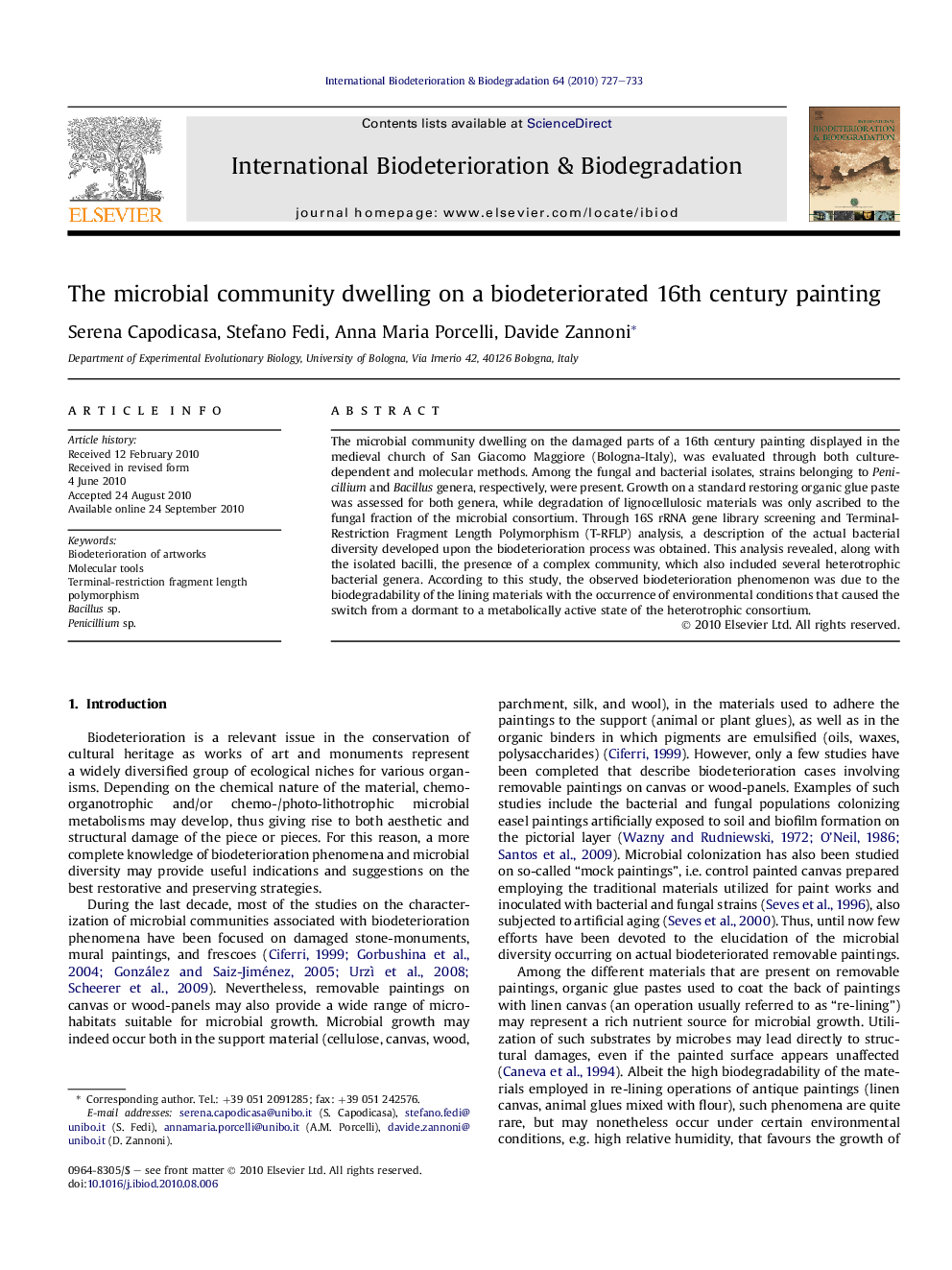| Article ID | Journal | Published Year | Pages | File Type |
|---|---|---|---|---|
| 4365390 | International Biodeterioration & Biodegradation | 2010 | 7 Pages |
The microbial community dwelling on the damaged parts of a 16th century painting displayed in the medieval church of San Giacomo Maggiore (Bologna-Italy), was evaluated through both culture-dependent and molecular methods. Among the fungal and bacterial isolates, strains belonging to Penicillium and Bacillus genera, respectively, were present. Growth on a standard restoring organic glue paste was assessed for both genera, while degradation of lignocellulosic materials was only ascribed to the fungal fraction of the microbial consortium. Through 16S rRNA gene library screening and Terminal-Restriction Fragment Length Polymorphism (T-RFLP) analysis, a description of the actual bacterial diversity developed upon the biodeterioration process was obtained. This analysis revealed, along with the isolated bacilli, the presence of a complex community, which also included several heterotrophic bacterial genera. According to this study, the observed biodeterioration phenomenon was due to the biodegradability of the lining materials with the occurrence of environmental conditions that caused the switch from a dormant to a metabolically active state of the heterotrophic consortium.
